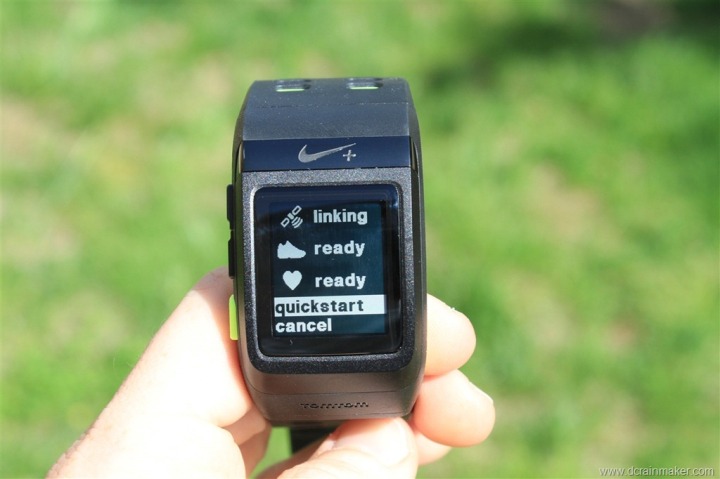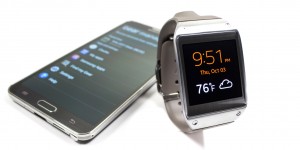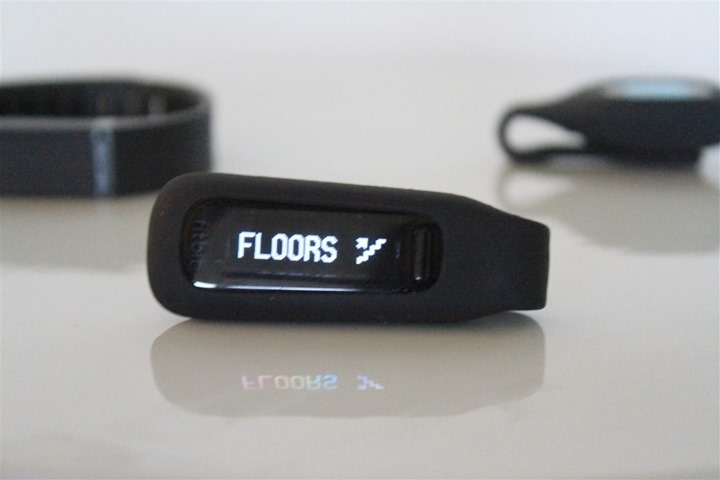I'm going to lay it out for you; the secret to great success and revenues. Are you ready? I'm sure you are, because aside from the "making people's lives healthier and better" etc. etc. let's be honest, the bottom line is quite a motivator, right?
Those of us using your products are a bit frustrated. I'm not sure if this is some technology immaturity or your lack of understanding as to the needs of your consumers, but I'm going to assume it's the latter, because I believe the technology can be accomplished and there are plenty of people like myself willing to drop the coin on the product that does the job.
So here it is, a laundry list of what you should include, in a single product, to make your fitness device the GO TO for complete amateurs like myself right on up to the most elite of athletes. It doesn't matter how fast or not we are, because the metrics still matter in the pursuit.
- The watch needs to have the right look and feel - In my opinion the Nike+GPS has the best design on that. It needs to have a wristband with 2 columns of holes, because that gives the band stability and it won't break like a single hole style wrist band. The tail of it should also lock down (no slidey band things that you tuck the tail into...those BREAK. EVERY. SINGLE. TIME). The TomTom sport watches are a close 2nd, but they seem to have the tail tucking annoyance instead of snapping down. I realize that Nike had to kind of do that with the USB connector being in the tail end, but regardless of how it syncs or connects, having the snap down end of the tail makes SO MUCH SENSE.
- The watch needs to have an E-Ink based screen - Again Nike+ is great for an example, but TomTom watches, Pebble, and HotWatch also utilize this, so I'll give them credit too. Additionally, HotWatch has some swipe based double-layer technology that Nike does not, so I'll include a pic of that here for my reference on this point.
- The watch should track multiple sports, not just running - This is one of the biggest downsides to the Nike+ watch. TomTom upped the game with the multisport in that aspect.
- External sensor support - Since you're tracking multiple sports, the ability to add external sensors (especially for indoor equipment like stationary bikes or rowers), is necessary for accuracy and metrics. If you're questioning whether to go ant+ or bluetooth...the oldies will say ant+ and those without anything invested in old stuff will say they don't care or bluetooth. I think Bluetooth is good since that means it's then on board for my next point, so go bluetooth, but make it so you can use cadence sensors, foot pods, and what have you to track indoors etc.
- On board GPS - Yes, GPS should be on board and I want (er I mean the world wants) it to have a fast lock on GPS so when I say run...I don't have to wander around for the perfect signal and hold my wrist ever so perfectly for a GPS lock for 10 minutes before I can start a run. TomTom claims this is a feature on the their new watches vs. their old Nike+ collab ones, but I don't own one and I can't speak to whether that's the case. Regardless...if you're making a watch, this should be a priority.
There are few things in life more frustrating than this:
- Allow phones and apps via their API to utilize your watch to control and interact with them - Most likely at this point, that means via Bluetooth 4.0 I'd assume. A good example would be the ability to control music playlists, but also so that the watch can handle the GPS tracking (without the phone using its GPS that drains the battery faster) and yet let the phone handle live run or race tracking so people can utilize apps that let friends and family "cheer them on" while they're running too and things like that. Pebble is a good example on this front as far as API.
- Altimeter - I don't have a current need for this yet, but many serious sports enthusiasts do and I might someday, so either make it standard or an option for an upgraded model, but consider it in your design. This is the case with the TomTom Multisport.
- Additional built in sensors - This should work like a Basis B1, though with the emphasis being on constant HRM, which they didn't implement at first with the B1. So, basically you're looking at a light based HRM (like Basis or Mio) and have it constant and then also a galvanic skin response and skin temp sensor, to more accurately calculate calorie burn.
- 3D accelerometer - This should act as a pedometer and stair tracking device like the Fitbit One. Since it's wrist worn, technically it would be like a Fitbit Force. I have yet to see the level of accuracy of a Fitbit One in a wrist based device. I challenge a manufacturer to figure that out and incorporate it into my dream watch.
- Private calling - ala the HotWatch - I currently have an order almost ready to be fulfilled by HotWatch and the primary reason I chose to purchase it is because of the private calling feature. It's SLICK and no one else does it. I also wanted to support them, because they might just be the ones to create this dream watch and I wanted them to succeed on their 1st gen product so that they could move onto that possibility.
- Cross Platform Syncing - I have a LOT of data on different websites. Primarily my old runs were through RunKeeper. I've exported via some hackery, most of my Nike+ data to Runkeeper as well, though I have to constantly go back to do it for my new ones and it's never 100% of all my information in one place. My fitbit account has a lot more of my daily stuff for the past 2 years. It's really helpful. Nike+ has the most accurate count of my running since I started really running in the past 2 years. I have various stuff on other sites (myfitnesspal, Basis, SparkPeople, Withings, and the list goes on). I want my dream watch to see all of the data everywhere and combine it into one place with meaningful graphs and data. I want it to pull all that in and compile it into something useful. I'd like it to record things in a standard GPS format, but still be able to push/sync that info to Nike+ in a way that is compatible with their proprietary format (which I realize..that stinks that they are that way, but it is where I have the most running data and I like the social/competitive nature of the Nike+ interface to compete with friends). I'm not sure how to get over the hurdle of the proprietary Nike+ footpod sensors other than to say, if you can make a bluetooth based footpod that fits into the Nike+ shoes and footpod holder pouches for non-Nike shoes that it would be highly beneficial.
Is this too much to ask? I hope not!









No comments:
Post a Comment